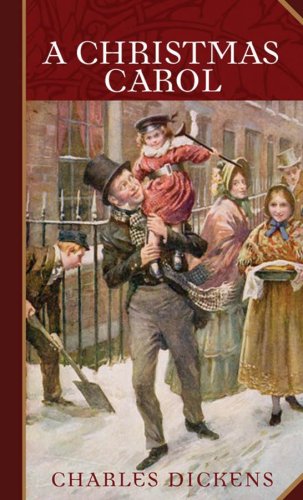A Christmas Carol was actually the result of a depressed time in Dickens’ life, from my understanding. To bolster his spirits, he was encouraged to write a story about the cheerier aspects of the holidays, things that gave him the most joy. Likewise, Dickens borrowed elements of his own experiences with poverty and what he ultimately penned was a classic that proudly sits at the top of nearly every famous book list ever compiled. (And if not, it should.) The story is straightforward: it’s a character study of one man who goes from Grinch to good-heart. Even though Scrooge’s initial disposition isn’t applause-worthy, he’s not despicable enough for you to hate him. You sense from the start he can be redeemed, which is exactly what happens.
The novella itself is broken into five staves (or chapters), most of which focus on Scrooge’s encounter with one of the Spirits. I think the organization is perfect as the focus is on Scrooge’s evolution (through each Spirit’s visit) and helps the story move along smoothly. Likewise, we not only catch glimpses of what was going on externally in Scrooge’s life but we also get to see inside his head, witnessing tiny moments that eventually blossom into a transformed heart. To Dickens’ credit, Scrooge’s change isn’t sudden (as in one moment he’s miserly to the core and the next moment he’s a good soul). It starts out slowly with Scrooge reflecting on his life, pondering what he could have done differently, until he confronts his own future demise that convinces him that in order to save himself, he has to give up his selfish ways.
Some people accuse Dickens of being a sentimentalist but I take no issue with the way he conveys raw human emotion in his works. Can it seem over-dramatic? Well, to our deadened, gotta-keep-it-together postmodern hearts it might appear that way, but that’s not the case. The abundance of joy and depth of sorrow within A Christmas Carol is meant to not be a perfect capture of reality but a respectful caricature of the heart. And while I can’t speak for anyone else, I can speak for myself and I know that A Christmas Carol never fails to move me each and every time I read it, and it’s a great cathartic journey from despair to abundant joy.
Overall, A Christmas Carol is a classic for a reason: it serves as a snapshot of Victorian England, it stands as one of Dickens’ most poignant works, and it shares a story that praises selflessness and compassion as well as the promise that even the most miserly of hearts can be utterly transformed.
Content:
Language – Essentially none. There may be a handful of British profanities or mild choice words but it’s certainly not pervasive and they’re easily overlooked.
Violence – None. The scenes with the Spirit of Christmas Yet to Come are the darkest of the lot but it’s for a good reason – to convict Scrooge to change his ways. Likewise, in one version of the future, Scrooge learns that a young child has died, but after he changes his ways for the better, the child avoids this fate.
Sexual Content – None.

